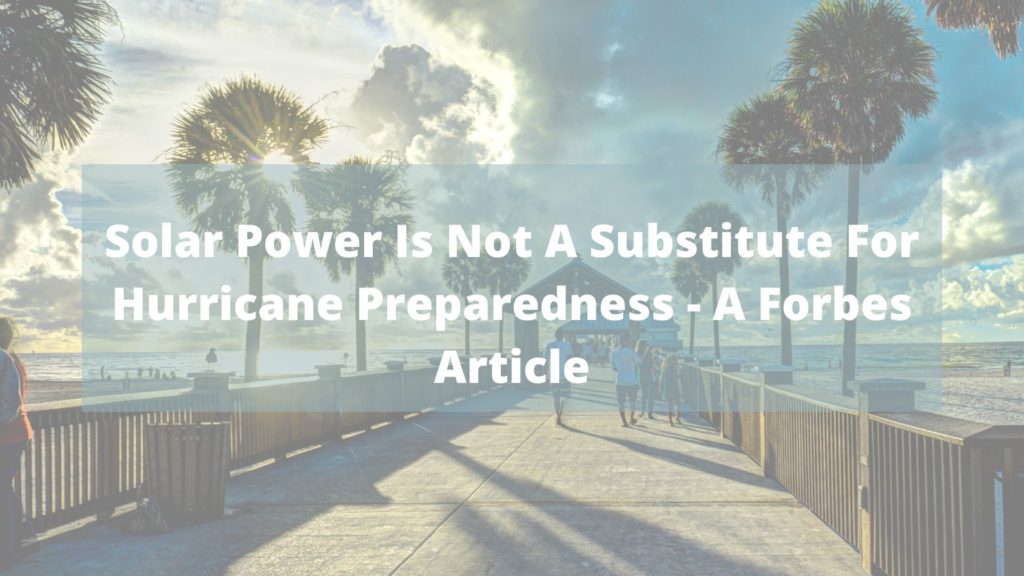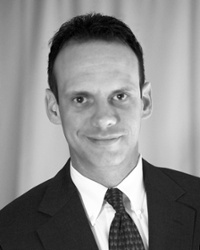
The Law Offices of John Caravella, P.C. does not own this content. This content was created by Ike Brannon, and was published to Forbes on December 14th, 2022. To view the full article, please click here.
After Hurricane Ian slammed into the Florida Gulf coast, doing an estimated $40 billion of damage and killing nearly 130 people, nascent recovery efforts were hampered by the simple fact that many homes and businesses remained without power for several days. While most of the 2.1 million homes that lost power during the hurricane were reconnected within eight days of the disaster—a much better performance than in previous hurricanes of similar magnitude, energy grid experts observed—numerous homes and businesses in Sanibel and Ft. Myers Island went without power six weeks out, forcing residents to live elsewhere and delaying rebuilding.
Bloomberg columnist Liam Denning recently suggested that a way to prevent extended power disruptions in communities susceptible to natural disasters, while making it quicker and more expedient to begin rebuilding, might be to take steps so that more households have rooftop solar panels and batteries that can continue to provide power in the immediate aftermath of future damaging storms.
While solar panels may seem like a simple, elegant solution to post-hurricane energy outages, widespread grid independence for the Florida Gulf Coast or elsewhere—which is what Denning effectively advocates—is not currently feasible at a significant scale. Working towards this goal instead of doing more to strengthen grid resilience—which Florida’s utilities have done, with considerable success—would ultimately be counterproductive.
At the moment, a home with state-of-the-art solar panels and a capacious (and expensive) battery still needs external power to run air conditioning most of the time, and on days without sun its reliance on external power becomes acute. Given the current cost of such a setup, further incentives for home solar panels-cum batteries would do little to change the fact that these would largely benefit wealthier homeowners.
What’s more, existing technology does not make it feasible for a home or business on the grid to continue taking power from their solar panels if the grid is down. Denning declares that Florida should simply be the “solar-panel state,” pointing out that California and New York have more rooftop panels than Florida. However, California and New York have significantly higher electric rates than Florida, precisely because of this difference.
Florida also happens to have a lot of large-scale solar power plants, and that model may turn out to be more cost-effective in the long-run than smaller home and work-based solar. Denning cites the experience of Babcock Ranch, a new community in Southwest Florida, which he reports did not lose power because of two “dedicated” large-scale solar power plants. What Denning misses is that both of those solar power plants actually feed the energy grid and not the community, and neither plant produced electricity during the storm—or the cloudy hours before Ian made landfall. Babcock Ranch founder Syd Kitson credited the local utility’s grid and the strong grid for keeping the lights on as Ian tore through Southwest Florida.
While increasing the amount of energy produced by solar energy may be a beneficial goal for many reasons, it is in no way a substitute for hurricane preparedness. We are a long way from a world where homes and businesses can rely on solar energy produced on their own, and absent considerable advances in battery technology we may never get there. Adding rooftop solar panels and a battery won’t make a home or business immune to the devastating winds, storm surge and flooding that come with destructive hurricanes, and storm exigencies should not motivate regulators to encourage home or business-based solar panels instead of large-scale solar plants.
Ike Brannon is a former senior economist for the United States Treasury and U.S. Congress. The Law Offices of John Caravella, P.C. does not own this content. This content was created by Ike Brannon, and was published to Forbes on December 14th, 2022. To view the full article, please click here.
 John Caravella Esq., is a construction attorney and formerly practicing project architect at The Law Office of John Caravella, P.C., representing architects, engineers, contractors, subcontractors, and owners in all phases of contract preparation, litigation, and arbitration across New York and Florida. He also serves as an arbitrator to the American Arbitration Association Construction Industry Panel. Mr. Caravella can be reached by email: [email protected] or (631) 608-1346.
John Caravella Esq., is a construction attorney and formerly practicing project architect at The Law Office of John Caravella, P.C., representing architects, engineers, contractors, subcontractors, and owners in all phases of contract preparation, litigation, and arbitration across New York and Florida. He also serves as an arbitrator to the American Arbitration Association Construction Industry Panel. Mr. Caravella can be reached by email: [email protected] or (631) 608-1346.
The information provided on this website does not, and is not intended to, constitute legal advice; instead, all information, content, and materials available on this site are for general informational purposes only. Readers of this website should contact their attorney to obtain advice with respect to any particular legal matter. No reader, user, or browser of this site should act or refrain from acting on the basis of information on this site without first seeking legal advice from counsel in the relevant jurisdiction. Only your individual attorney can provide assurances that the information contained herein – and your interpretation of it – is applicable or appropriate to your particular situation. Use of, and access to, this website or any of the links or resources contained within the site do not create an attorney-client relationship between the reader, user, or browser and website authors, contributors, contributing law firms, or committee members and their respective employers.
